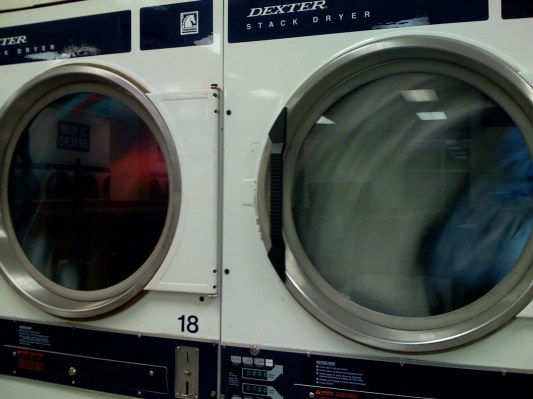Nearly a month after the on-demand laundry service Washio shut its doors, its assets have been starched, pressed and folded into the operations of one of its main competitors — Rinse.
For a while, competition for on-demand laundering seemed to be a regional game, with both Rinse and Washio vying for territory along the West Coast and, eventually, nationally. On the East Coast, startups like Cleanly and FlyCleaners launched to take the competition to the cleaners.
Rinse would not disclose the terms of the deal for Washio’s assets. “It wasn’t a sign of Rinse winning and Washio losing,” chief executive Ajay Prakash said of the acquisition.
For Prakash, it was only a matter of time before the dirty truth around Washio’s business model would come out.
Simply put, Prakash told TechCrunch, the on-demand model isn’t the most efficient or economical way to handle the dirty business of cleaning clothes. Any arguments to the contrary would just be a turn through the spin cycle.
In Prakash’s opinion, it was actually Washio’s pivot to an on-demand model that soiled the company’s business prospects.
As our own Jordan Crook wrote when Washio shut down:
When Washio originally launched, it offered a service that would pick up users’ laundry or dry cleaning at a scheduled time, sometimes as early as 24 hours from the time of the order placement. In 2015, the company launched Washio Now, guaranteeing a pick-up within an hour of ordering, with a 24-hour turnaround time on clothes.
Rinse’s model never wavered from the scheduled approach, which allowed the company to spend more reasonably on pickup and delivery.
With the acquisition of Washio assets, Rinse picks up additional customers in Boston, Los Angeles, Chicago, San Francisco, Oakland, New York and Washington, D.C.
“We had a chance to acquire customer lists and we took advantage of it,” Prakash said.
Both Washio and Rinse have an impressive cohort of investors. Washio, which raised far more cash ($16.2 million, according to CrunchBase) had a stable of investors including celebrity VCs like Ashton Kutcher and Nas, along with institutional investors like Canaan Partners and AME Ventures.
Rinse, for its part, is backed by a host of Los Angeles’ finest firms, including Arena Ventures and CAA Ventures, along with Accelerator Ventures, Expansion VC, Structure Capital, Otter Rock Capital and Base Ventures. Javelin Venture Partners led the company’s Series A round, which closed in April.
On-demand businesses have continued to have a rocky time of it in the past two years. There are a lot of upfront costs to set up a customer base and the businesses themselves are pretty low-margin. Wringing efficiencies out of the business model are critical to success and are tricky without significant financial support up-front.
It’s something that other on-demand services like the cleaning services Handy and Homejoy have experienced. Handy had some tough times last year, and Homejoy shut down entirely.
Rinse’s model is different from most of its competitors. It doesn’t keep drivers in circulation all day, every day, and takes a few days to process orders.
Valets, the part-time employees who pick up and drop off clothes, only operate between 8 and 10 at night. There’s a drop-off service available, as well, if there’s no one who’s going to be home at the times when Rinse’s drivers are delivering.
Among Rinse’s current services are: launder and press, wash and fold, dry cleaning, hang dry, leather cleaning and some other garment repair services. The company pays select cleaners a wholesale rate, then bills customers a retail price to generate revenue.
